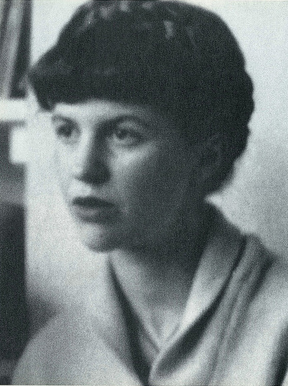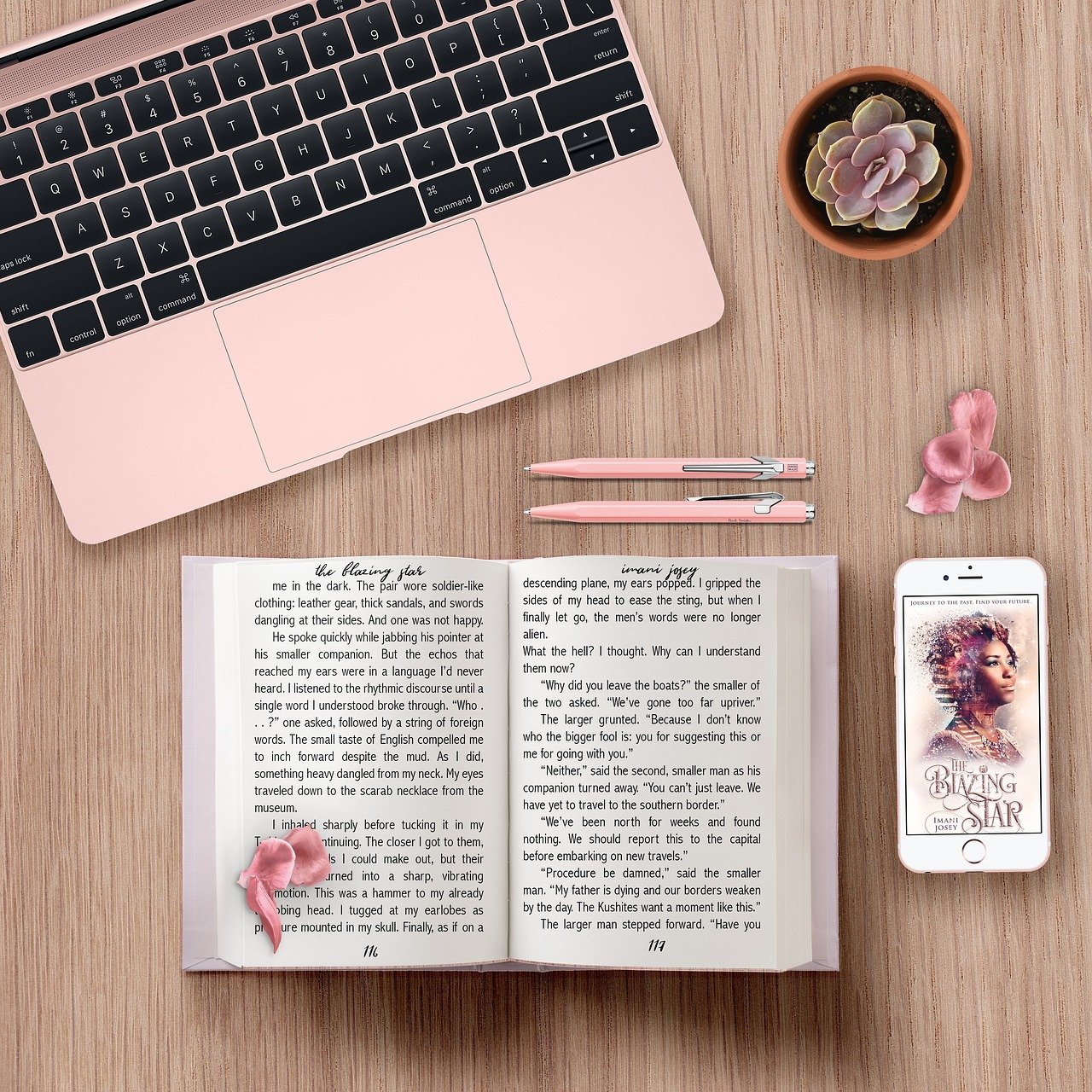
The male sex has been the dominating one across all levels of the society and fields of study too. Literature has not been an exception to this domination. Throughout centuries, texts have been written and looked at from the male perspective, characters have been read through the male gaze. The feminine in the literature gradually got sidelined in this process. There existed female writers, some of the most popular ones being Jane Austen and Bronte sisters however their reach was quite limited. Their sex did not really allow them to reveal their identity nor did it give them the liberty to write stories that did not fit in the conventional.
Feminism as a movement became more popular in the 18th century with Mary Wollstonecraft’s A Vindication of the Rights of Woman. This too rose to fame not immediately after its publication. Amidst this struggle to establish an equal footing in the society, women began to speak up for their rights. There were revolts, protests and rallies that women participated in demanding their basic rights like the right to vote, to be fulfilled. The waves of feminism started crashing the shores of patriarchal society and an upheaval began.
The Victorian period and the subsequent modernist period of English Literature saw a rise in the number of female writers addressing the real problems women faced in the society. Two among them and probably the most popular too are Virginia Woolf and Sylvia Plath.
There might only be few people who call themselves readers and have never come across these two authors, at least in passing. If you have not, that is alright! It is never too late to learn. Today we will try to explore and understand how these two authors have contributed immensely to literature. Both Virginia Woolf and Sylvia Palth are still regarded as prolific writers for their ability to express themselves through their works. These two women have surprisingly similar yet different lives and this article will delve into the how of the statement. But before that let us try and understand their biography.
Virginia Woolf

Early Life
Virginia Woolf was born on 25 January, 1882 in London, England. Coming from an affluent English family she went on to become an essayist, novelist and critic. Virginia Adeline Stephen was the third child of Julia Duckworth and Victorian letterman Leslie Stephen. The Stephen family resided in Kensington, a reputable middle-class area of England, at Hyde Park Gate. Virginia had individual tutoring and studied extensively from her father’s extensive collection of literary classics while her brothers, Thoby and Adrian, were sent to Cambridge.
Later, she became resentful of the devaluation of women in a patriarchal society and chastised her own father for sending her brothers to college and school automatically while she was never given the opportunity to receive a formal education. Woolf’s decision to join the Bloomsbury circle, which is renowned for its unconventional connections and innovative ideas, was subsequently influenced by her Victorian upbringing.
Literary Career
In addition to writing essays and reviews for magazines including The Guardian, The Times Literary Supplement, and The National Review, Virginia started teaching English literature and history at a London adult education college.
Woolf continued her journalistic endeavors throughout her life, reviewing contemporary and classical literature in modernist reviews like the Athenaeum, The Dial and The Criterion. During this period she made new friends with people who matched her intellectual capabilities, some of them being Lytton Strachey, Leonard Woolf, and Clive Bell. In order to discuss the arts, this group began gathering for “Thursday Evenings” in Gordon Square, London, in 1906 and Vanessa Bell’s “Friday Club” shortly thereafter. As these two creative and literary circles developed, the unofficial “Bloomsbury Group” was born.
In 1905, Woolf began writing reviews for the Times Literary Supplement. Woolf married literary critic and economics author Leonard Woolf in 1912 after her brother Thoby passed away in 1906.
Career as a Novelist
She released her debut book, The Voyage Out, in 1915. Woolf had been working on The Voyage Out since 1908 and finished it in 1913, but the novel’s release was postponed until 1915 due to another emotional breakdown that occurred during the first few years of her marriage. After that, she wrote two novels: the more avant-garde Jacob’s Room (1922), which was a fictional account of the life of her late brother Thoby, and the more conventional Night and Day (1919).
Not until Mrs. Dalloway was published in 1925 did Woolf’s writing start to exhibit the modernist style that would come to define her work. Considered to be the most popular of Woolf’s works, this work delves into the daily lives and innermost thoughts of Mrs. Dalloway’s characters and how they are interwoven in her interrelated story. It was first titled The Hours.
In contrast to the men authors who came before her, Woolf aimed to convey her personal experiences as a woman and a female writer through her novel literary method. Woolf through this text describes the feminine in its rawest and truest form. This text allows the readers to enter the private spaces of the life of Mrs Dalloway and Septimus too. The references to mental health issues, disillusionment, sense of alienation all correspond to the socio – political of Britain in that period that is World War 1.
Woolf honed her literary style in her later works, To the Lighthouse (1927) and The Waves (1931). The stream-of-consciousness narrative style that resulted gives her reader unheard-of access to her characters’ thoughts, which are written as if they were happening right then and there—free-flowing and unedited.
In The Waves she writes, “I am not one and simple, but complex and many.” so much meaning is packed in that sentence. The complexity of self, the confusion of many, the idea of choice and its consequences, free will – everything is at stake and we as humans are accountable for our actions. This is the depth of writing Virginia Woolf’s books offer the readers. The layered narrative mingling with emotions that people usually hesitate to address are expressed beautifully in her novels. The extremely personal writing style, stream of consciousness makes it a relatable read.
Career as an Essayist and Critic
Apart from writing novels, Woolf was also an essayist. One of the most popular of Woolf’s essays is A Room Of One’s Own. The essay evolved from two lectures Woolf gave at Cambridge’s women’s colleges, where she explored the social and economic history of women’s writing as well as the challenges faced by modern female writers. In it she famously wrote: “a woman must have money and a room of her own if she is to write fiction; and that, as you will see, leaves the great problem of the true nature of woman and the true nature of fiction unsolved” (Woolf, A Room of One’s Own, 1).
With such powerful words, the essay showcases the idea of space and the restrictions that confinement lays on women. This in turn leads to the discrimination of women in society.
According to reports, Woolf and English poet Vita Sackville-West had a protracted affair that began in 1922 and lasted for most of the 1920s. As the protagonist, Sackville-West was included in the illustrations for her book Orlando, published in 1928. The two stayed friends for the rest of Woolf’s life, however it is unclear why the affair ended. Woolf is believed to have had love relationships with other women during her lifetime, notably pianist Ethel Smyth, who also has a place setting at The Dinner Party, even though this is considered to be her first and most committed lesbian relationship.
Sylvia Plath

Early Life
Sylvia Plath, an American writer, was born on 27 October 1932, in Boston, Massachusetts, when Virginia Woolf had published the majority of her works in Britain. Her mother, Aurelia Schober, was a master’s student at Boston University when she met Plath’s father, Otto Plath, who was her professor. They were married in January of 1932.
Plath’s father passed away in 1940 when she was eight years old due to complications from diabetes. He had been severe, and Plath’s relationships and poems—particularly her elegy and her poem “Daddy”—were profoundly impacted by his authoritarian ways and passing. Plath began journaling at the age of eleven and had her poems published in local newspapers and publications.
Shortly after high school graduation in 1950, she received her first national publication in the Christian Science Monitor. Plath enrolled at Smith College in 1950 and earned a summa cum laude degree there in 1955. Plath took a Fulbright Scholarship to Cambridge, England, after graduating. She met Ted Hughes, an English poet, at a party at the beginning of 1956. Plath and Hughes got married on June 16, 1956, not long after.
In 1957, Plath went back to Massachusetts to study with Robert Lowell. Colossus, her debut poetry collection, was initially released in England in 1960 and then in the US two years later. She returned to England and gave birth to her children, Frieda and Nicholas, in 1960 and 1962, respectively. Ted Hughes left Plath for Assia Gutmann Wevill in 1962. The majority of the poems that would make up Plath’s most well-known book, Ariel, were written over that winter. It is through these works that Sylvia Plath is regarded as one of the most prolific modernist poets of the 20th century.
Her diary entries
Plath first experienced the signs of the acute depression that would eventually cause her suicide while she was an undergraduate. “It is as if my life were magically run by two electric currents: joyous positive and despairing negative—whichever is running at the moment dominates my life, floods it,” she wrote in a June 20, 1958, journal entry.
Bipolar disorder, commonly referred to as manic depression, is an extremely serious illness for which there were no truly effective treatments available at the time of Plath’s death. This is an evocative account of the illness. Plath, then 20 years old, tried to end her life by ingesting sleeping pills in August 1953. After surviving the attempt, she was admitted to the hospital and treated with electroshock therapy.
Literary Career
Throughout her life which spanned over 30 years, she authored one novel – The Bell Jar, under the pseudonym Victoria Lucas. The Bell Jar is a semi autobiographical novel that vividly narrates her experience with breakdown and recovery.
Fig Tree Analogy by Plath
Sylvia Plath in this book draws her famous fig tree analogy
In this paragraph, Greenwood, the protagonist, compares the various paths she imagines for herself to a fruit tree and all of its branches. These paths lead to figurative futures, which in this case are represented by ripe figs. Although each of these figs is unique, she idealizes them all, and they are all equally appealing. Multiple desirable choices leads to a difficult decision making process that has an element of regret attached to it.
The fig tree analogy strikes a chord with a lot of female readers because those are the exact same problems they face in real life too. The overwhelming feeling of making the choices, the hesitance, the indecisiveness all leads to an unforeseen future. This delay leads to the “figs” rotting and the person is left to starve.
Daddy by Plath
Another work by Plath, Daddy is a highly controversial poem from the collection Ariel published in 1965, after her death. It is a deeply complex poem that addresses her relationship with her father and the daunting memories attached to it. Death, mystery, violence and trauma form the main themes of the poem. Daddy, the poem caught the attention of the readers because of its connotative title too. A deep psychoanalytical approach of this poem speaks volume of the relationship Plath shared with her father and Plath’s psyche too.
Both Virginia Woolf and Sylvia Plath, modernists writers from Britain and America respectively, wrote about femininity in its unconventional sense. Though the writing was not necessarily feminist in nature, they addressed the existence of the females and the deep emotional turmoil they had to go through. The society that they lived in did not value their position and both these authors wrote from their first hand, lived experiences. Their lives played an important role in their literary career.
The themes of mental health, uneasiness, confusion, contemplation played a major role in their works. These themes were quite contrary to the depiction of an “ideal” woman of that period. Questions regarding sexuality, childhood, mental health in the feminine were very new for that age and that distinguished them apart from the other writers. These autobiographical elements addressed directly or indirectly gave a glimpse of their struggles and private spaces. The stream of consciousness techniques used in their works gave way to the psyche of the characters. The identity of self was a different way of looking at the characters giving a confessional curve to the narratives.
On a more personal level, one of the disturbing similarities that these authors share is that they both died from suicide. While Virginia Woolf drowned herself in the River Ouse on 29 March, 1941, Sylvia Plath committed suicide on 11 February, 1963 in London.
Virginia Woolf and Sylvia Plath, though separated by time and place, share striking similarities that make their works both deeply personal and universally relatable. Their lives and literary contributions reflect the intertwining of personal suffering with creative expression, producing writings that offer powerful, complex insights into the human condition.
Their writings are a testament to their personal struggles and their ability to transform suffering into art that speaks to universal human experiences. Despite their differing styles—Woolf’s modernist innovation and Plath’s confessional intensity—their works continue to resonate because of their emotional depth, intellectual rigor, and exploration of the complexities of the human psyche. Their lives and deaths, marked by tragedy, only amplify the power of their literary voices, and their legacies endure as monumental contributions to literature and feminist discourse.



